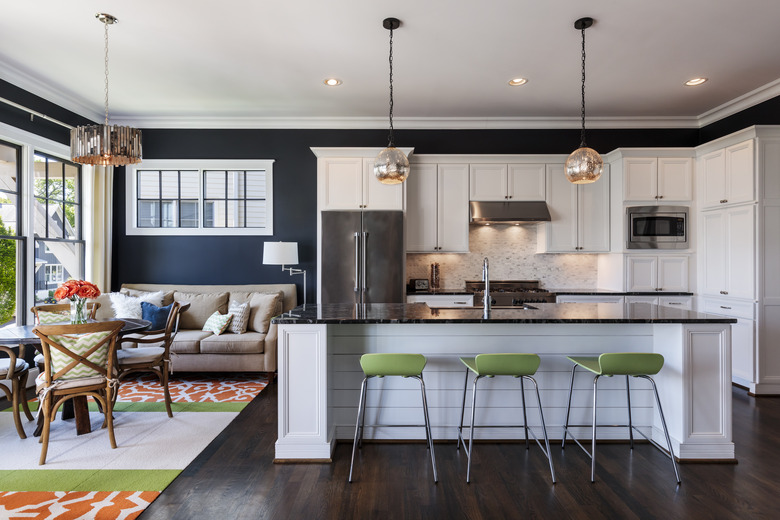Kitchen Nook Space Requirements
An eat-in kitchen is a luxury when space is at a premium, particularly in urban homes. But there's a lot to love about having a space to plunk down your coffee, spread out the paper and enjoy that fresh blueberry muffin. If you've been poring over built-in breakfast nook plans and getting a little daunted by all the options, here's the gist on what you'll need for space.
Average Breakfast Nook Size
Average Breakfast Nook Size
First off, to be a breakfast nook typically means it's an eating area built into the kitchen, usually tucked into a corner. Benches and banquettes are standard. "Average size," though, well, that depends entirely on the household. Are you a party of two, or do you have a brood of children as well?
Design professionals, like the ones at Ballard Designs, will tell you the one dimension that defines how much space you'll need is that a table should have a minimum of 36 inches on all sides of it. This allows for chairs or benches and humans to sit comfortably around it. Walking space for passing by the table needs to be even greater, say an extra 24 inches — unless you don't have chairs on the passing side, then the 36 inches is more than enough.
So how many people do you need to sit and how big is your table? The breakfast nook table size comes down to what you're comfortable with. The smallest table you should probably use would be a 36-inch round or square table. The narrowest space for a nook, according to pro designers, is about a 5-foot square nook.
Other Breakfast Nook Dimensions
Other Breakfast Nook Dimensions
There are other considerations rather than just the space itself. The table, for instance, will be around 30 inches high, if it's standard. If you're going with banquettes, they vary in depth, but 26 inches deep tends to be a comfortable depth. Then there's how the table interacts with the banquette. That's referred to as the overhang, which should have the table hanging no more than 3 inches over the banquette.
The banquette, benches or chairs should be between 14 to 17 inches in height. Banquettes and benches are a good place for storage, but realistically they should be for storing things you don't need to access regularly, like perhaps surplus food or your holiday dishes that come out just once a year.
Rules Can Be Broken
Rules Can Be Broken
While the 36-inch clearance around tables is a great guideline, that and other rules can all be broken if you're really limited in your space. A fold-down, wall-mounted table can make the space convertible if you're in a cramped apartment. Chairs and no benches are permissible for that tight squeeze, too.
Ultimately, this is your space and you can design it how you like. There are solutions for tiny nooks that you'll find when scouring creative blogs and Pinterest boards. And while realtors talk about how some clients are tearing nooks out to create pantries and storage spaces, it's nice to know plenty of people still value space for sharing breakfast, some coffee and the day's crossword puzzle with their loved ones or even just their cat.
Think creatively about tables and seating within the space you have, and you might be surprised by what's possible in your little corner of the world.
